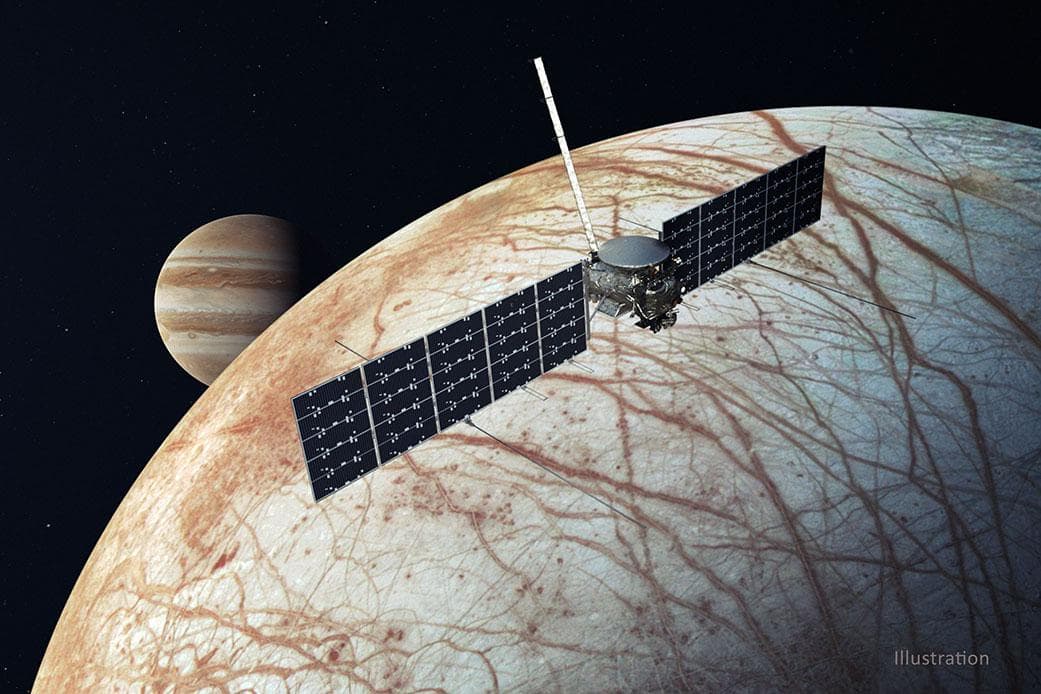The Europa Clipper mission has faced a serious problem: some of its components may not be able to withstand the powerful radiation belts of Jupiter. Because of this, the launch of the vehicle may be postponed for several years.

Europa Clipper is NASA’s flagship mission. Its target is Europa, a moon of Jupiter, which has a huge ocean of liquid water under its icy curst. During a series of dozens of close flybys, the spacecraft will have to study the characteristics of this ocean and assess its habitability.
At present, Europa Clipper has already been delivered to the Kennedy Space Center in Florida, where the spacecraft is being prepared for the launch scheduled for October 10. For example, engineers recently installed a high-gain antenna on the spacecraft. However, these plans may be hampered by a recently discovered problem with the spacecraft’s electronics.
Jupiter has the most powerful radiation belts in the entire solar system. Therefore, the issue of resistance of the spacecraft’s components to high radiation doses is key. However, in May, it turned out that some of the transistors installed on board Europa Clipper failed at lower radiation doses than expected.
Currently, mission experts are conducting a series of tests to understand how many transistors may be vulnerable and what is the limit of their safe use. The preliminary analysis is expected to be completed by the end of July.
If the test results are unsatisfactory, NASA will have no choice but to replace the spacecraft’s electronic components. This means postponing the launch. The next ballistic windows for the flight to Europa will be opened in 2025 and 2026, but they will require additional gravity maneuvers, which will extend the flight time to Jupiter. According to experts, the probability that the spacecraft will be launched this fall is currently about 40% to 60%.
Based on NASA materials

